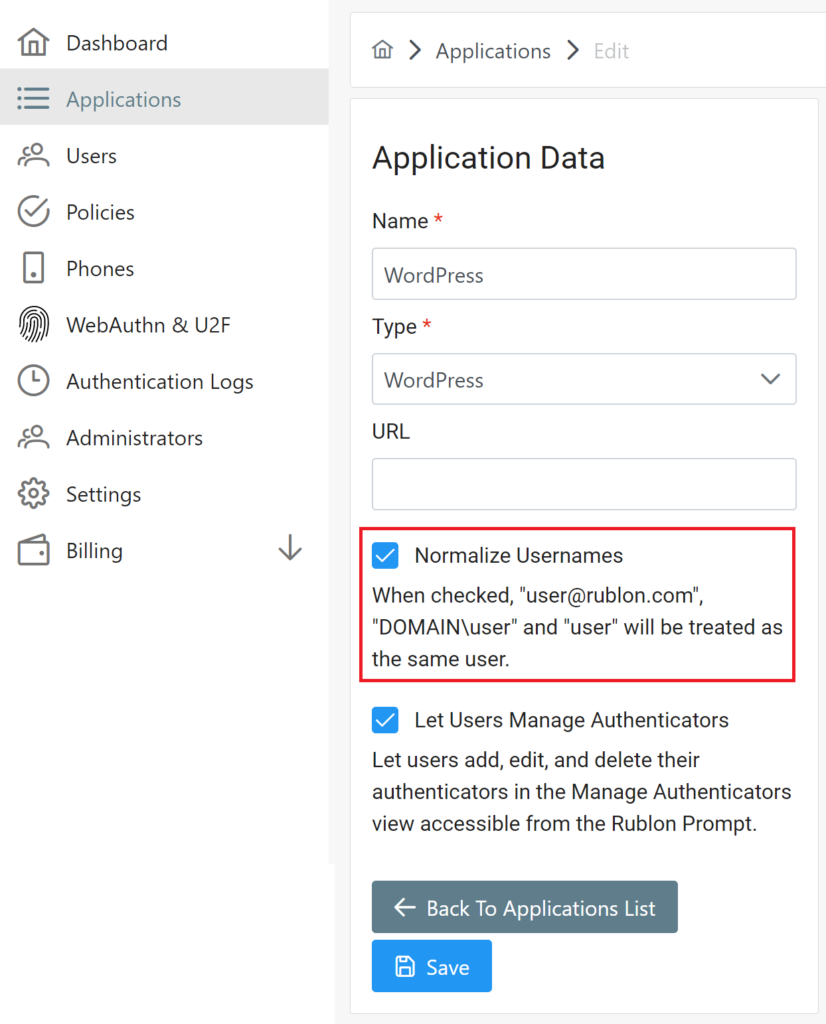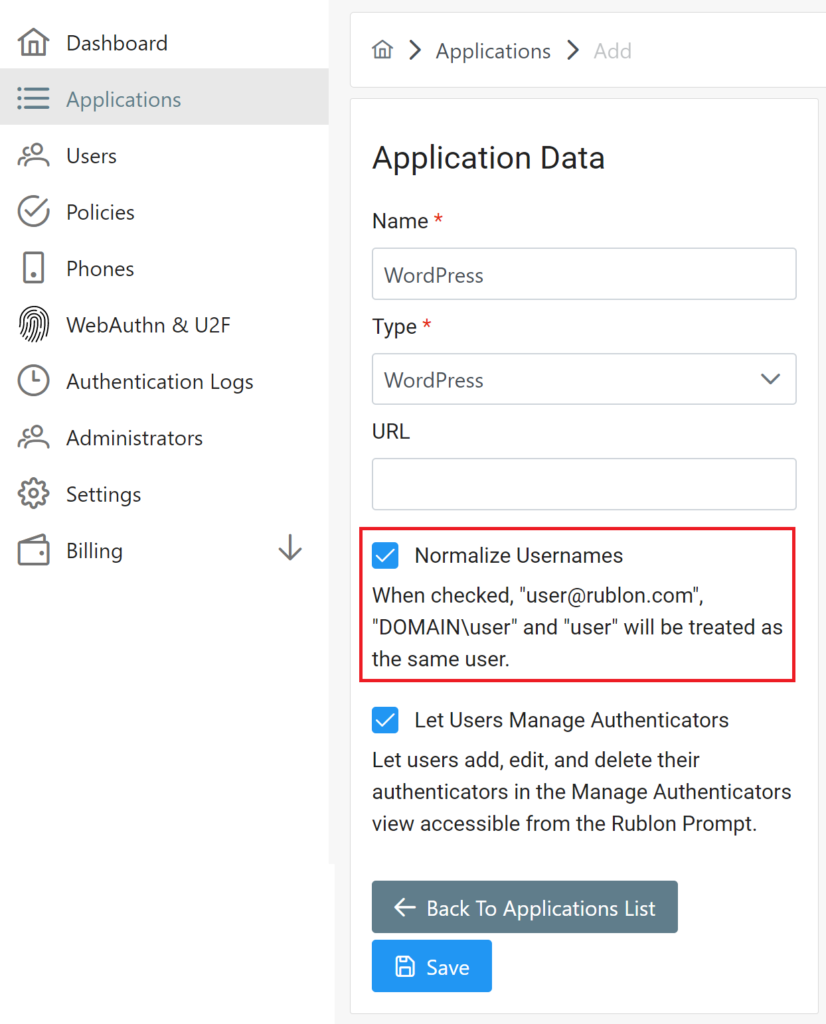Last updated on February 24, 2025
What is Username Normalization?
How Does Username Normalization Work?
- bob.smith@hotmail.com
- bob.smith@rublon.local
- rublon\bob.smith
- bob.smith
- bob.smith@hotmail.com → bob.smith
- bob.smith@rublon.local → bob.smith
- rublon\bob.smith → bob.smith
How to Enable Username Normalization?
When editing an existing application

When creating a new application
